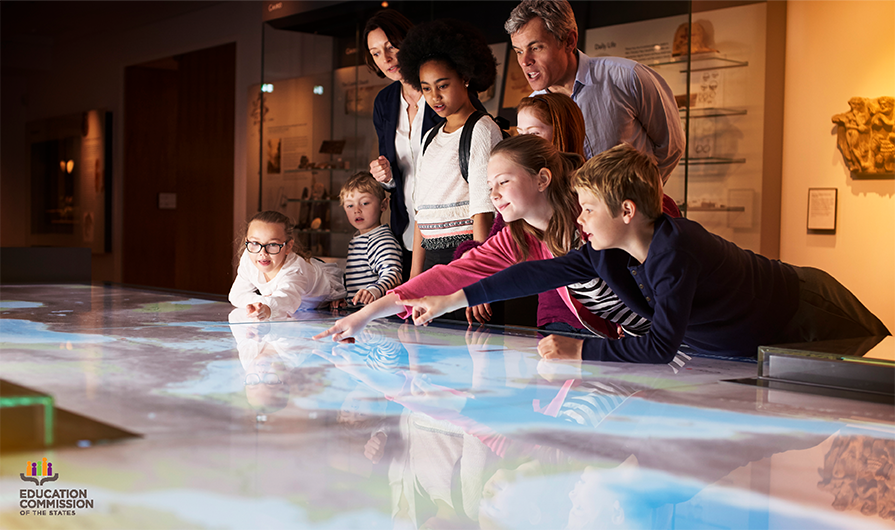A trip to a museum provides opportunities to experience the world at different points in time — to look back at the past to see a world that may seem unimaginable now, to engage with current events and culture, and to think far into the future and about things that remain unexplored. Participation in the arts in education — including immersive experiences like field trips to a museum — engages students in deeper learning and fosters growth in a wide range of skills, including creativity, cultural sensitivity and innovation.
That is, in part, why Crystal Bridges Museum of American Art, the University of Arkansas and Trike Theatre — with funding from by the Windgate Foundation — launched the Windgate School Partnership Program. This long-term, arts integration research project provides in-school art interventions, with programming that includes field trips to Crystal Bridges, professional development for teachers and teaching artist residencies in participating schools. This scalable program helps to bring the arts to students in rural communities, who may not otherwise have access to these experiences. Through program implementation, the partnership seeks to understand how field trips affect students’ critical thinking skills, tolerance and empathy.
Integrating arts education into other core academic curricula offers a holistic approach to education that supports the enrichment of learning environments and the developmental and continued success of students. Research findings show that the arts in education provide students with safe spaces to explore ideas and solutions, including ideas about their own futures. Study observations also show that students participating in a single-visit art museum program spent extended time with works of art, allowing them to closely examine the art and develop questions and curiosities. But these benefits do not stop at the student, as the arts in education can also help build community and social capital within schools.
The Windgate School Partnership Program is currently in 17 Title I schools (many of them in rural areas), with 53 classrooms across Arkansas, Missouri and Oklahoma participating. The arts intervention begins when students are in third grade and ends in fifth grade. More than 1,000 students in the program engage in arts-integrated lessons and participate in two guided tours of Crystal Bridges during non-business hours. Students also regularly respond to surveys from the University of Arkansas. The surveys are part of a 10-year, longitudinal study to examine the effects of the program’s arts integration activities on social and emotional learning, as well as academic outcomes.
While participating in arts learning may not impact all students similarly, another study exploring outcomes of museum field trips showed positive gains in critical thinking, historical empathy, interest in art museums and tolerance for all demographic subgroups. Participating students — especially students in rural or high-poverty areas — exhibited higher levels of tolerance than students who did not attend a field trip.
For states looking to increase access to the arts in education in rural communities and provide equitable education opportunities for students — particularly in areas where access to arts experiences outside of the classroom may be limited — the Windgate School Partnership Program can serve as a model. In the future, the program hopes to add additional opportunities for students to create works of art and for educators to engage in the development of course curricula, continuing to provide experiences both in and out of the classroom that support positive outcomes through the arts in education.
Want to learn more? See video from the STEAM Education as a Strategy for Engaging Communities panel discussion at the 2019 AEP Annual Convening, where I shared more about the work of the Windgate School Partnership Program.




